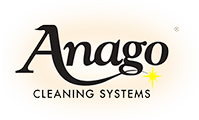
Another school year officially started in September, and across the nation, schools have reopened to teach classrooms full of young children. Kids are eager to leave remote learning behind them (and so are their parents). But this semester is unlike any other: COVID-19 is still a threat to the health and safety of pupils and teachers. It’s one thing to understand and implement cleaning protocols as you prepare for the day – it’s another to uphold them when your classroom is full of excited children. For this semester to continue safely, new cleaning protocols must be followed within schools:
Take away unnecessary clutter. Why clean more than you need to? With fewer objects, you’ll have fewer things to sanitize. You can remove items that children tend to share to help reduce contact. Examples include seating areas, toy shelves, and old class projects. Doing this will make it easier to clean surfaces quickly and efficiently.
Make a checklist. The classroom is full of frequently touched surfaces where germs can accumulate. It’s nearly impossible to juggle all these responsibilities in your head along with your teaching duties, so write the information down in a list. Clean high-contact surfaces often like desks, coat hooks, computers, art-making materials, and shared items like staplers and hole punchers. Check off each item as you clean it so that you know for certain your classroom is safe.
Keep disinfectant on-hand. Place a bottle of hand sanitizer by the door of your classroom so that everyone who enters will remember to use it. This prevents outside germs from spreading within the classroom. While it might be hard for children to remember at first, it will be easier once it becomes a habit. After children do activities that involve sharing, wipe down the teaching materials with a disinfectant.
Ask children questions about symptoms before they enter the classroom. Monitoring your students for signs of illness is critical. Before children attend class, send them a symptom questionnaire to complete with their parents. This will help you watch for the development of a virus. If a student falls ill while they’re at school, place them in an isolated room until a parent can pick them up.
Hold classes outside on nice days. Winter is approaching, and warm days in the sun are limited. But it’s worth taking advantage of the weather while you still can! Having class outside allows children to learn in the open air which reduces the chances of illness spreading throughout the classroom. If it’s too cold to learn outside, try opening a window to increase the air circulation.
Encourage frequent handwashing with helpful posters. By hanging posters with informative messages, you’ll remind children about how best to stay safe. Select posters with eye-catching graphics that show kids how to properly wash their hands. Other posters with cartoon characters sneezing into their elbow will remind children about proper etiquette.
The safety of your students, their families, and your coworkers is of the utmost importance; you want to make sure that your classroom is a safe space for everyone involved. Trust your cleaning needs with Winnipeg commercial cleaning services provided by Anago. We will thoroughly disinfect your classroom to facilitate the safest learning environment.








